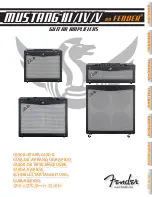
37
Video” (or to a distant remote location) you are required to attach both types between the Audio/Video
source and the
SSP-25
,
in order to have both available at the outputs
.
One of the powerful features of the
SSP-25
is its ability to determine the character of the input audio signal, and its
ability to automatically choose between up to four different sources on an input. Because
AV1
through
AUD3
have at
least one digital input as well as one analog, you are able to make an input do double duty. For example; you can
attach an analog and a digital source to
AUD1
and when
AUD1
is selected it will choose the "live" input, or, if both
sources happen to be playing at the same time, it can be instructed to select one source over the other.
AV4
has the most flexibility, and is designed to be used with a High-End laser disc player; one which has two or more
digital audio outputs.
AV4
has three digital inputs (a Toslink and two RCA co-axial), plus an analog input. You can only
add the (optional) internal RF Demodulator to this input. (Required for AC3 when it is played from a laser disc). By
utilizing
AV4
with a High End laser player it is possible to have the
SSP-25
automatically sense and play the correct
mode whether you are playing a CD, a laser disc encoded in Dolby Pro Logic, a disc encoded with AC3 or one
encoded in DTS. (Of course
AV4
may be used with any audio/video device of your choice, or an audio-only input if you
wish). We will discuss the actual setup in the following sections.
5.4.2 SOURCE SETUP
Press the "
MENU
" key to bring up the first display. The Display shows "Main
MENU
" and "Mode Setup.” Press the "
>
"
or the "
<
" button until "Main
MENU
" is revealed in the first line and "Source setup" in the second. Press the
ENTER
key to select “Source setup.” The display will change to read “Source setup” in the top line and “
AV1
setup” in the
second line. To begin the setup of
AV1
press the
ENTER
key again. (If
AV1
is not the input you wish to configure,
press the “
>
” or “
<
” key to cycle through the inputs until you reach the input you want, then press
ENTER
. “
AV1
setup”
(or whichever input you have selected), will move to the top line and “Mode: Auto” will appear in the second line. . (If
“Mode” has previously been configured then the selected choice will appear). Setup for each input will only require the
use of the “
/\
”, “
\/
”, “
>
” and “
<
” keys on the remote wand. Please refer to the Setup
MENU
Tree for guidance on
choices.
5.4.3 MODE
“Mode” has two choices: “auto”, and “man”(ual). Setting “Mode” tells the
SSP-25
whether it should or should not
determine the type of encoding which has been applied to the digital or analog audio signal it is receiving. Selecting
“auto” tells the
SSP-25
to determine the type of decoding required to properly play the input signal. Selecting “man”
instructs the
SSP-25
to allow you to tell it which type of decoding to use. “Auto” is the default setting, and we
recommend using it. Even when the
SSP-25
selects the decoding you still have the option of using the “
< MODE >
”
keys on the wand to over-ride the selection and choose the correct playback mode. If you are watching a movie in
DTS Cinema and wish to hear it stereo instead of surround, you merely use the “
< MODE >
” keys to cycle to “Stereo”
playback, and sit back and listen.
To change the “Mode” press the “
/\
” key or the “
\/
” key. Either key will work, but the “
/\
” key will cause the mode to cycle
from “auto” to “man” and back again. When your choice is displayed press the “
>
” key to set the mode into memory
and move to the next option: “Input:.”
5.4.4 INPUT
“Input” has three choices: “auto”, “analog”, and “digital.” “Auto” instructs the
SSP-25
to test the analog and digital
inputs to determine which input has signal and to then play the live input. (If it is set to “auto” and it detects program on
the analog and the digital inputs it will always select digital over analog). A selection of “Analog” tells the
SSP-25
to
only play the analog input and to ignore any digital signal that might be present. So, naturally, selecting “digital” will tell
the
SSP-25
to always play the material present at the digital input, even if there is no signal at the digital input and
there is signal present at the analog input.
NOTE:
















































